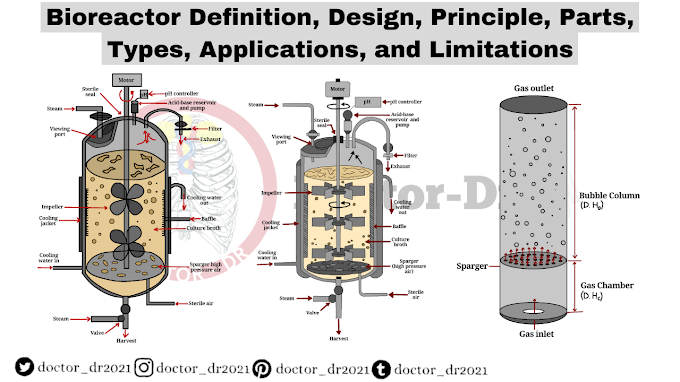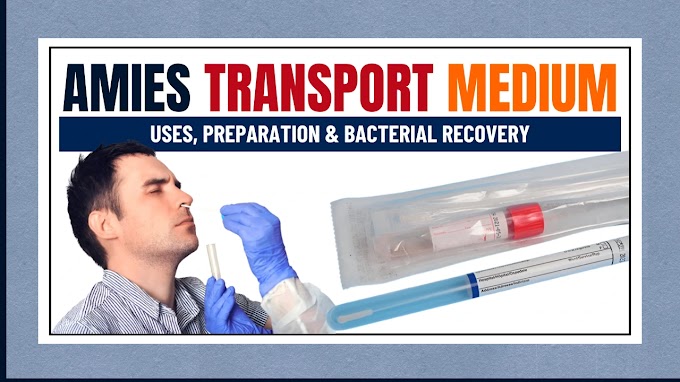Table of Contents
- Introduction to CIN Agar
- Objective of CIN Agar
- Principle of CIN Agar
- Composition of CIN Agar
- Preparation of CIN Agar Medium (HiMedia)
- Quality Control and Colony Characters on CIN Agar
- Precautions
- Limitations of CIN Agar
- References
Introduction to CIN Agar
Cefsulodin-Irgasan-Novobiocin Agar (CIN Agar), commonly known as Yersinia Selective Agar, is a highly effective selective and differential culture medium designed for the isolation and identification of Yersinia species, particularly Yersinia enterocolitica.
Originally developed by Schiemann D.A. in 1979, CIN Agar features a blend of selective agents, including cefsulodin, irgasan, novobiocin, crystal violet, and bile salts, alongside essential nutrient components. Over time, modifications to its formulation have improved its efficiency for microbiological applications. The detailed composition of the original CIN medium is discussed below.
Objective of CIN Agar
The primary objective of CIN Agar is to facilitate the selective isolation and accurate identification of Yersinia enterocolitica from clinical fecal samples and various food specimens.
Principle of CIN Agar
Cefsulodin-Irgasan-Novobiocin (CIN) Agar is a specialized medium containing selective agents and antibiotics that inhibit the growth of most Gram-positive and many Gram-negative bacteria, while enabling the identification of Yersinia enterocolitica colonies.
Crystal violet and sodium deoxycholate (bile salt) present in CIN Agar effectively suppress the growth of Gram-positive bacteria. Irgasan further enhances this inhibition, also targeting fungal growth. The antibiotic combination of cefsulodin, irgasan, and novobiocin selectively restricts the growth of a wide range of Gram-negative and Gram-positive bacteria, but allows Yersinia enterocolitica to flourish, helping it outgrow competitors.
Mannitol, a fermentable sugar in the medium, is utilized by Yersinia species to produce organic acids, lowering the pH of the medium. This pH change is detected by neutral red, a pH indicator incorporated in the agar. As a result, Yersinia enterocolitica ferments mannitol and produces characteristic "bull’s-eye" colonies—central dark red/pink zones surrounded by a translucent outer ring, aiding in the identification of this pathogen.
Composition of CIN Agar
The original composition of Schiemann’s CIN Agar, as described by Schiemann D.A. in 1979 (Schiemann D.A. 1979. Synthesis of a selective agar medium for Yersinia enterocolitica. Can. J. Microbiol. 25: 1298-1304), is as follows:
Components and Quantities
- Special Peptone (Oxoid) – 20 grams
- Yeast Extract (Difco) – 2 grams
- Mannitol – 20 grams
- Pyruvic Acid (Sodium salt) – 2 grams
- Sodium Chloride – 1 gram
- Magnesium Sulfate 7H2O – 10 milligrams (10 mL of 0.1% stock solution)
- Agar (Oxoid No. 4) – 12 grams
- Irgasan DP300 – 10 mL of 0.04% in 95% ethanol
- Bile Salts (Difco) – 2 grams in 200 mL distilled water
- NaOH – 1 mL of 5N NaOH solution
- Neutral Red – 10 mL of 3 mg/mL solution
- Crystal Violet – 10 mL of 0.1 mg/mL solution
- Cefsulodin – 10 mL of 1.5 mg/mL solution
- Novobiocin – 10 mL of 1.5 mg/mL solution
- Final pH (adjusted by 5N NaOH) – 7.4
(Reference: Schiemann D.A., 1979, Synthesis of a selective agar medium for Yersinia enterocolitica. Can. J. Microbiol., 25: 1298. DOI: 10.1139/m79-205. PMID: 540256.)
Modern Composition (HiMedia)
In modern formulations, companies supply CIN Agar as a base medium (Yersinia Agar Base) with separate selective supplements (Cefsulodin, Irgasan, and Novobiocin), as these antimicrobial components cannot be autoclaved like other ingredients. HiMedia Laboratories also provides CIN Agar this way, offering the Yersinia Agar Base and CTN Selective Supplement. When mixed in the correct proportions, these components form CIN Agar for selective isolation of Yersinia enterocolitica.
Components of CIN Agar per 1000 mL:
- Peptone – 20.00 grams
- Yeast Extract – 2.000 grams
- Mannitol – 20.00 grams
- Sodium Pyruvate – 2.000 grams
- Sodium Chloride (NaCl) – 1.000 grams
- Magnesium Sulfate – 0.010 grams
- Sodium Deoxycholate – 0.500 grams
- Neutral Red – 0.030 grams
- Crystal Violet – 0.001 grams
- CTN Selective Supplement (FD034) – 2 Vials
- Agar – 12.50 grams
- Final pH 7.4 ±0.2 at 25°C
(Reference: HiMedia Laboratories)
Components per 1 Vial of CTN Selective Supplement (FD034):
- Cefsulodin – 7.500 mg
- Irgasan (Triclosan) – 2.000 mg
- Novobiocin – 1.250 mg
(Reference: HiMedia Laboratories)
Preparation of CIN Agar Medium (HiMedia)
- Suspend 58.04 grams of Yersinia Agar Base (or the required amount of each listed component) in 1000 mL of distilled water in a suitable conical flask or glass bottle.
- Mix thoroughly using a magnetic stirrer or by manual shaking.
- Heat the mixture to boiling to ensure that all components, including the agar, dissolve completely.
- Sterilize the medium by autoclaving for 15 minutes at 121°C and 15 lbs pressure.
- Allow the medium to cool to approximately 45°C.
- For the selective supplement, add 2 mL of sterile distilled water and 1 mL of ethanol to each vial of CTN Selective Supplement (FD034) and gently shake to mix. Prepare two vials in this manner.
- Once the basal medium has cooled to around 45°C, add the contents of the two prepared CTN Selective Supplement vials to the medium.
- Mix gently to ensure uniform distribution, forming the final CIN Agar medium.
- Dispense the required amount of the CIN Agar medium into Petri plates or test tubes and allow it to solidify completely before use.
Shelf Life and Storage Conditions
- The prepared CIN Agar medium can be stored at 2 to 8°C in a sealed container for 3 to 8 weeks.
- Unprepared media components should be stored at 10 to 30°C in a sealed container until the expiration date indicated on the label.
Quality Control and Colony Characters on CIN Agar
The unprepared CIN Agar medium powder with neutral red indicator will appear yellow to pink in color, while the prepared and solidified medium in a Petri dish will have an orange-red or pink hue.
The pH of the medium should be 7.4 ±0.2 at 25°C.
Cultural Characteristics of Bacteria after 24 to 48 Hours of Incubation at 22 to 32°C:
Precautions
- Do not add the CTN Selective Supplement before autoclaving or when the medium temperature is above 50°C or below 40°C.
- Use sterile distilled water to hydrate the CTN Selective Supplement vial.
- Ensure the correct amount of CTN Selective Supplement is used to prevent the growth of unwanted bacteria.
Limitations of CIN Agar
- Other Yersinia species, such as Y. pseudotuberculosis, Y. frederiksenii, Y. kristensenii, Y. intermedia, and others, may also grow and produce similar colonies.
- Bacteria like Aeromonas, Serratia liquefaciens, Citrobacter freundii, and Enterobacter agglomerans can grow and exhibit similar colony characteristics.
- CIN Agar provides only a presumptive identification of Yersinia enterocolitica. Confirmation should be performed using biochemical or genetic analysis.
Applications
CIN Agar is used for the isolation and identification of Yersinia enterocolitica strains from clinical (fecal) samples and food samples.
Safety and Disposal
Dispose of used medium by autoclaving or incineration
References
- Schiemann DA. Synthesis of a selective agar medium for Yersinia enterocolitica. Can J Microbiol. 1979 Nov;25(11):1298-1304. doi: 10.1139/m79-205. PMID: 540256.
- Sarovich DS, Colman RE, Price EP, Chung WK, Lee J, Schupp JM, Cobble KR, Busch JD, Alexander J, Keim P, Wagner DM. Selective isolation of Yersinia pestis from plague-infected fleas. J Microbiol Methods. 2010 Jul;82(1):95-7. doi: 10.1016/j.mimet.2010.03.019. Epub 2010 Apr 10. PMID: 20385178; PMCID: PMC2903439.
- Jorgensen, J.H., Pfaller, M.A., Carroll, K.C., Funke, G., Landry, M.L., Richter, S.S., and Warnock, D.W. (2015) Manual of Clinical Microbiology, 11th Edition. Vol. 1.
- (1995). Cefsulodin Irgasan Novobiocin (CIN) agar. Progress in Industrial Microbiology, 34, 275-277. https://doi.org/10.1016/S0079-6352(05)80027-X
- HiMedia Laboratories. CIN Agar Technical Specifications. Available at: https://www.himedialabs.com/media/TD/M843.pdf
- HiMedia Laboratories. CTN Selective Supplement Technical Specifications. Available at: https://www.himedialabs.com/media/TD/FD034.pdf
- Sigma-Aldrich. Cefsulodin Irgasan Novobiocin Agar (CIN) Technical Sheet. Available at: https://www.sigmaaldrich.com/deepweb/assets/sigmaaldrich/product/documents/122/409/95760dat.pdf
- Dalynn Biologicals. PY47 Technical Specifications. Available at: https://www.dalynn.com/dyn/ck_assets/files/tech/PY47.pdf
- Fisher Scientific. CIN Agar Instructions for Use. Available at: https://assets.fishersci.com/TFS-Assets/LSG/manuals/IFU1998.pdf
- Bioz. CIN Agar from HiMedia Laboratories. Available at: https://www.bioz.com/result/cin%20agar/product/HiMedia%20Laboratories
- Neogen Corporation. Yersinia Selective Agar - Schiemann’s CIN Agar Technical Specifications. Available at: https://www.neogen.com/globalassets/pim/assets/original/10033/official_ncm0182_yersinia-selective-agar-schiemanns-cin-agar_technical-specifications_en-us.pdf
- EMP. CIN Agar. Available at: http://emp.com.ge/culture-media/cin-agar/










